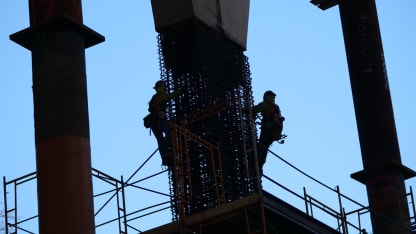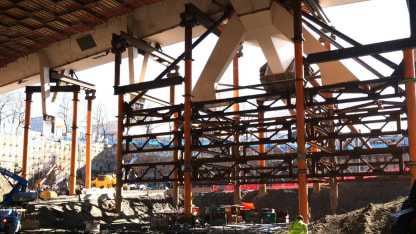Here's the dirt about the dirt at the New Arena at Seattle Center: The digging and hauling of 600,000 cubic yards is nearly complete.
"Last September, we started digging the hole," says Ken Johnsen, construction executive for Oak View Group and NHL Seattle. "Our goal was to reach a point where we could start putting in the concrete [permanent pilings] by early 2020. That's happening and we are about 90 percent done with hauling the dirt. We should be finished by mid-March."
Permanent Markers
As reinforced concrete pilings are constructed to endure at the New Arena, the removal of temporary steel and final loads of dirt signals milestones at Seattle Center
Seattle's iconic arena roof is no longer floating




















